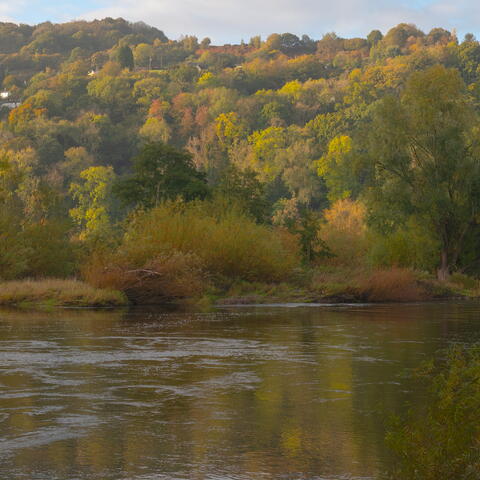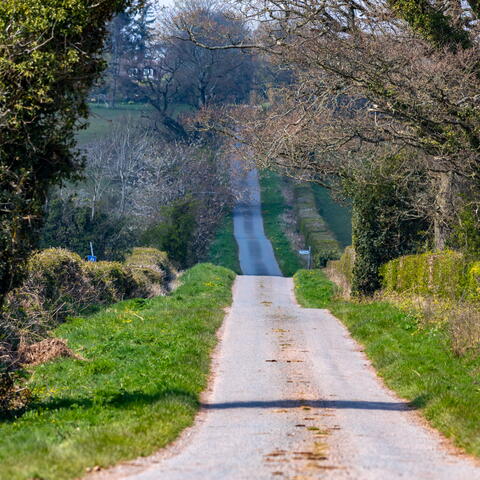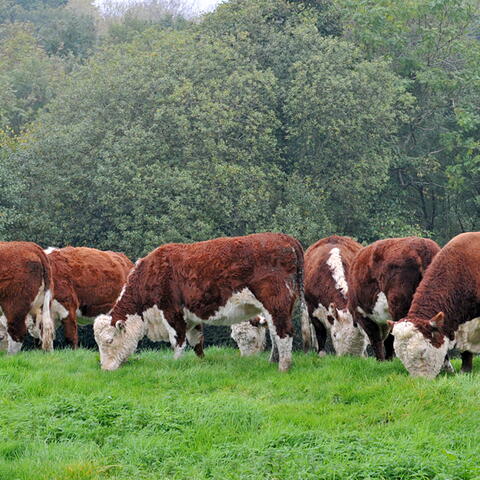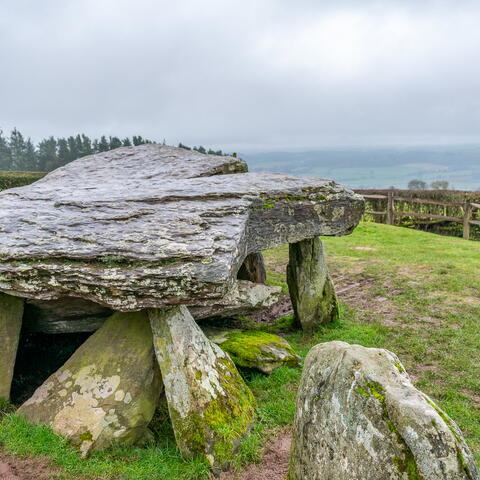Cider Making with Nature in Much Marcle
From overgrown orchard to artisan producer

James Marsden of Gregg's Pit describes his journey to becoming an award-winning cider and perry maker, including his passion for organic methods which support local wildlife.
In 1992, I bought a derelict 18th century cottage with a small traditional orchard shown on the 1888 Ordnance Survey map with two others, now long gone. It sits prettily within sight of May Hill at Much Marcle, but was then neglected, sad and scruffy, waist high in nettles, docks and brambles with several rat-infested chicken sheds, piles of scrap metal and empty bottles.
After months of cutting, clearing and burning, which revealed four hand crafted lugg hooks, all that remained of the ‘panking’ poles (long ash poles with a metal hook used to shake the trees at harvest time) hanging high in the orchard trees, it was time to identify the varieties. Help from the previous owner and local experts, confirmed identities of our very own variety, the Gregg’s Pit perry pear, the much-valued bittersweet White Close Pippin cider apple and 30 other varieties among 100 standard trees.
Spring 1993 saw the first plantings of new cider apple trees, hedge laying and fencing, all enabled by a capital grant from the Countryside Stewardship Scheme. Sheep grazing was re-introduced from late May until August (six weeks before fruit fall to avoid risk of cross-contamination). Traditional orchard management skills were learned by training, trial and error. Sense of place, continuity in a cultural landscape, renewed productivity and the many wildlife benefits all make active management so rewarding!
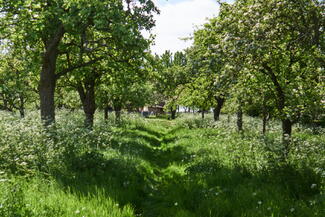
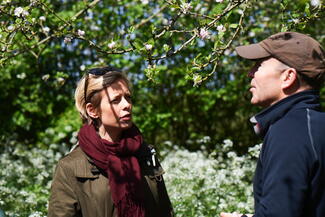
We prune young trees to promote new growth, shape and light. No more than 30% of branches of any tree are removed. Mature perry pear trees (some >200 years old) look after themselves because their branches are brittle, liable to self-prune and dangerous to climb. Some dead and decaying wood is always left in the older trees to provide a succession of habitats for insects, cavity and hole nesting birds like tree creeper, spotted flycatcher, owls and woodpeckers. When winter gales or grazing livestock push trees over we select the best fruitwood to convert into furniture (e.g. bedside tables from a Michelin cider apple, a new bed and bookcase from a Blakeney Red perry pear), and leave others to rot where they fall.
Patches of south-facing nettles are left to encourage butterflies. No chemical sprays are used on the trees, and we know our predecessors applied none since the 1930s. There’s clear scientific evidence to support this approach – a systematic survey of 106 Herefordshire orchards by the Central Science Laboratory found that unsprayed orchards held more birds than sprayed orchards. We used pheromone traps for a few years, but stopped when they caught a blue tit. We rely on natural predators to manage pests like codling moth, apple sawfly and aphids, which is why we prefer hornets to bees - a local beekeeper once offered his hives to help with pollination, but hornets predate bees so the hives had to go.
Having restored the orchard, what to do with the fruit? Our first meagre crop was sold to Westons Cider, but by 1994 it was 3 tonnes and we began ‘share cropping’ with a friend who pressed our fruit in return for 30% of the juice. This passion for making real artisan cider and perry has grown into a micro-business producing 6000 litres a year.
Seasons define our orchard year, and each brings new experiences. Hoarfrost on skeletal trees in mid-winter is a beautiful excuse to delay pruning. Cold weather also encourages large mixed flocks of fieldfare, redwing and starling to feed on the orchard floor, where marauding sparrowhawk predate the weakest. Wild daffodils bloom in March, followed by cowslips, cuckooflowers, orange tip and brimstone butterflies. Blossom time starts with damson and plums, perry pears, and later cider apples, until early June. Spring arrives when migrant breeding birds return and bats emerge to forage for insects, day roosting in the cider shed loft. Owls become less vocal and more elusive at their nests, but a little owl is sometimes seen bobbing on a fence or gathering worms to feed young. Fruit sets in mid-summer and the orchard becomes a quieter place, best enjoyed from a hammock! Ripe autumn fruit fall signals harvest, a feeding frenzy for hornets, wasps, comma and red admiral butterflies. By late November, our fermenting vats are full and the year soon turns again.
